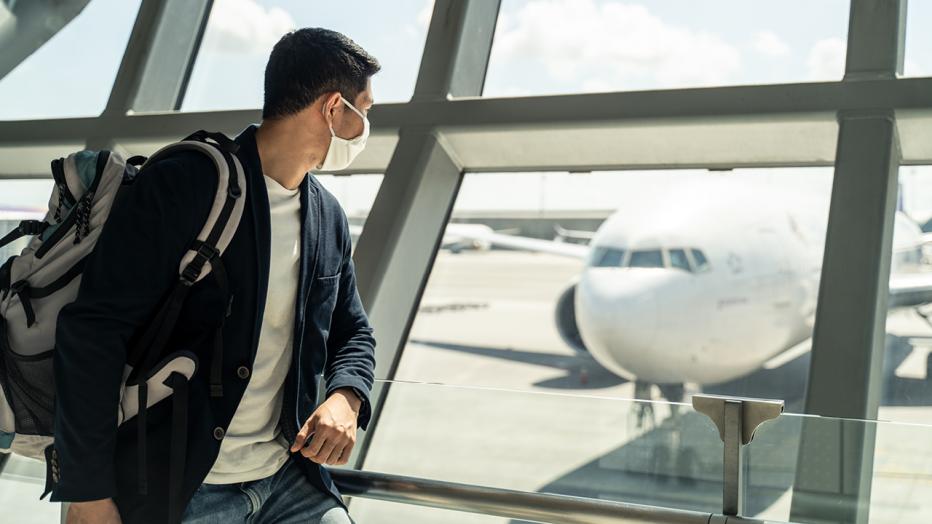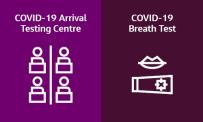
In this Jacobs.com article, we feature insights from Joseph Butler, Regional Solutions Director, Aviation and Matthew Holmes, Global Technology Leader, Healthcare on the nexus between aviation and health for the industry to restart their engines and take to the skies.
Since the emergence of the COVID-19 pandemic, the aviation sector has been at a standstill. But now, after months of uncertainty, the industry is gearing up for a gradual restart, shifting its focus to recovery while limiting the risks of virus transmission.
Restoring public confidence is key to industry recovery, underpinning the return of air traffic and delivering the much-needed economic benefits globally in today’s economic downturn. Hence, it is important for any recovery strategy to strike an equitable balance between policy, industry guidelines and regulation, and the comfort, health and wellbeing of passengers and employees. This must be central to discussions at a government and regulatory level for the industry to boost demand and recover faster and stronger.
The Industry Consensus
Recently, the leading bodies of the industry issued two guidance documents, Take-off: Guidance for Air Travel through the COVID-19 Public Health Crisis by the International Civil Aviation Organization (ICAO) and Safely Restarting Aviation, jointly published by Airports Council International (ACI) World and the International Air Transport Association (IATA).

Both papers highlight the importance of physical distancing at 1-meter, use of face masks, enhanced cleaning protocols, contact tracing, health declaration submission, rapid testing, contactless processing and limiting access to terminals exclusively to passengers and staff. These are commonplace in the global benchmarks we have studied, but comparatively, worthy of note is the emphasis and absence of certain measures. Focusing specifically on terminal buildings, we explore some of these measures and their impact in the new normal.
Physical distancing: Terminal buildings are busy places and keeping travelers at an appropriate physical distance will be challenging. Interestingly, both documents say that 1 meter is the target for physical distancing, although ACI states that it is only a reopening measure due to the inherent capacity limitations of existing terminals.
It’s not surprising that there is an active debate on the impracticality of physical distancing, especially how airlines can fly under such conditions. It begs the question: if a safe distance can’t be maintained on an aircraft, why attempt in the terminal? We believe that distancing measures are prudent where feasible and should be advocated rather than enforced. Our view is that, while passenger behaviors will adapt and vary accordingly, the focus should be prioritized on making the end-to-end travel experience as safe and comfortable as possible.
Large scale testing: In some regions, testing international flyers upon arrival is established as the new norm to mitigate the risk of importation and transmission via air travel. However, ACI recommends that large scale testing be avoided at airports. This is polarizing in many countries, particularly in Asia Pacific where we’re seeing full clinical testing regimes for arriving international passengers, with results returned in three to four hours. While these testing regimes are operationally challenging and highly intrusive, it is far less onerous than a 14-day quarantine period. Undoubtedly, it will be challenging to conduct large scale testing as passenger numbers gradually rise, yet it’s the only viable option until an enhanced testing technology becomes available.
Contact tracing: If effective, contact tracing will go a long way to break the chain of transmission for transportation hubs such as airports. Epidemiologists say its role in contact investigation is critical in nipping an outbreak in the bud early. Nevertheless, implementing it effectively across borders and the multi-party travel chain will prove challenging in many countries. While both papers advocate the importance of contact tracing as a new travel protocol, the implementation guidelines lack clarity to inform a unified approach for the industry. This initiative is crucial for risk mitigation assessment, however inevitably, international coordination may take some time.
To the benefit of the aviation industry, these guidelines are mostly practical and straightforward. However, there are significant hurdles to cross, with the efficacy and practicality being questioned in some.
An Exploration of Science
Although parts of the world are on a path to recovery, the planet remains cautious. The disease’s ability to reemerge rapidly — for example China and Australia are now both experiencing isolated and fast outbreaks — shows how quickly things can change. If not handled adequately, isolated outbreaks could lead to a full-blown second-wave. What does this mean for the global community and the aviation industry?
It’s clear that COVID-19 will be with us for the long-haul. Medical experts believe that zoonotic viruses—those that transmit from animals to humans—like COVID-19 and historically HIV, Ebola, SARS, bubonic plague and Avian Influenza viruses, are an ongoing risk to public health.
A vaccine is our only hope to suppress the virus and researchers anticipate the quest may well take the course of 2021. The final hurdle will be the global manufacturing constraints, which will delay widespread and rapid deployment. In the near term, the discovery of anti-virals that reduce the effects of infection and aid recovery are more likely to be attainable.
Testing and contact tracing are key to living with COVID-19, however there is currently no quick and convenient way to detect the virus in the community. Airports around the world have deployed body temperature testing as an indicator of general wellness. It can’t detect the virus itself, but it’s key to enhancing passenger perceptions of a safe travel experience.

In the meantime, enforcing a 14-day quarantine period for international travelers with two rounds of testing, appears to be an effective approach if the protocol is followed. However, the capacity of the receiving country to quarantine every passenger for 14 days may be constrained by the local hotel industry – for example in Australia, the number of daily overseas arrivals has recently been cut by 50% to ease pressure on the hotel quarantine system. While the 14-day quarantine period poses a major barrier to international travel, it’s the safest and most effective approach for the industry to limit the risks of transmission.
See how the world's airports are implementing COVID-19 precautions in this map graphic.
Embracing Health and Wellness
Without a deployable anti-viral, vaccine and advanced screening technology for virus detection, the aviation eco-system will need to implement robust infection control procedures. While it is far-fetched to expect a complete industry transformation, the industry needs to enhance efforts in reducing the risks of transmission and stem the virus, where possible.
It’s clear that the industry’s recovery is subject to an abundance of guidelines, however there is a lack of international coordination and consistency. Hence, we’re helping our airport clients to adapt. The aviation industry has grown and thrived off a strong dual focus on passenger safety and security. In a post COVID-19 world, the industry must embrace a third concept, health and wellness, to rebuild passenger confidence and re-establish global travel.
Embracing health and wellness presents an opportunity for new thinking at airports. Moreover, it does not entail significant reshaping of airport infrastructure but rather an overlay of current operations that applies infection control procedures and principles that are already well established in a clinical environment. This can be achieved by a step change approach that is pragmatic, building passenger confidence, yet flexible and adaptable to the proliferation of future technologies.
Current industry guidelines support this approach, requiring temperature checks and health screening protocols to be carried out by trained medical professionals. Instances of airports collaborating with hospitals are already emerging, such as Heathrow’s recent initiative to deploy dedicated teams of doctors and health officials at airports.
Looking through the lens of airport owners, airline and industry regulators, other adaptation measures may include:
- Directly applying established clinical health procedures to airport and airline operations.
- Establishing procedures and strategies for maintaining passenger, public and staff health while at the airport.
- Planning and designing medical based facilities in the terminal that are flexible and adaptable to future needs.
Now more than ever, airports have a key role to play in the sustainability of the entire aviation system, and we’re here to help. We believe the return of passenger confidence stems from the comfort of safer travel experiences, that embrace the concept of health and wellness at the core of its frontline efforts to revive. In the new future, the convergence of our specialist expertise in aviation and health care will help our clients emerge stronger, beyond the new normal.
In our next article, we will explore how a collaborative approach on the development of a Concept of Operations (CONOPs) and Standard Operating Procedures (SOP’s) could be tailored to meet the challenges of a recovering industry.
About the Authors
-

Joseph Butler is passionate about how technology can deliver a seamless journey for passengers, while improving security, safety and entertainment in a highly regulated environment. He works at the forefront of technological innovations aimed at improving the passenger journey and maximizing airports’ operational efficiency. As the impacts of COVID-19 unfolds, Joseph is developing a specialist service offering to support the recovery of the aviation industry.
-

Matthew Holmes leads Jacobs’ Global Healthcare solutions business, supporting healthcare advisory and design services teams across a wide range of projects. His work is focused on the sustainable delivery of healthcare services, while challenging the how, what and where – as key components in the delivery of sustainable healthcare system. Partnering with our aviation specialists, Matthew is helping our airport clients reimagine solutions for a more resilient, post pandemic future.












































